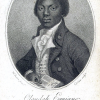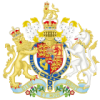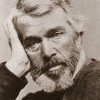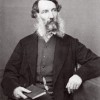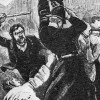Black Lives Matter
Created by Carrie Sickmann on Mon, 04/08/2024 - 10:06
Part of Group:
In this timeline, you will find some major events in British history that have influenced our current discourse about race and current racial politics. Each of these events include scholarly sources that might be useful when researching and developing your own individual timeline entries.
Timeline
Chronological table
| Date | Event | Created by | Associated Places | |
|---|---|---|---|---|
| Jan 1789 |
Interesting Narrative of the Life of Olaudah Equiano
Articles |
Dave Rettenmaier | ||
| 29 Aug 1833 |
Slavery Abolition Act
Articles |
Dave Rettenmaier | ||
| Dec 1849 |
Carlyle's "Negro Question"
Articles |
Dave Rettenmaier | ||
| 10 May 1857 to 20 Jun 1858 |
Indian Uprising
ArticlesPriti Joshi, “1857; or, Can the Indian ‘Mutiny’ Be Fixed?” Related ArticlesJulie Codell, “On the Delhi Coronation Durbars, 1877, 1903, 1911″ |
Dave Rettenmaier | ||
| 2 Oct 1865 |
George William Gordon executedGordon, a Jamaican former slave and elected member of the Jamaica House of Assembly, is executed by hanging after a court martial condemns him to death for his alleged role in encouraging the Morant Bay rebellion. Articles |
Dave Rettenmaier | ||
| 11 Oct 1865 |
Morant Bay Rebellion
Articles |
Dave Rettenmaier | ||
| Dec 1865 |
“Jamaica Committee”
Articles |
Dave Rettenmaier | ||
| 2 Jul 1866 |
Hyde Park demonstrationHyde Park Demonstration of the Major Reform League on 23 July 1866. After the British government banned a meeting organized to press for voting rights, 200,000 people entered the Park and clashed with police and soldiers. Related ArticlesPeter Melville Logan, “On Culture: Matthew Arnold’s Culture and Anarchy, 1869″ |
Dave Rettenmaier | ||
| 11 Feb 1867 |
Trafalgar Square demonstrationMajor Reform League march and demonstration in Trafalgar Square, London on 11 February 1867. Related Articles |
Dave Rettenmaier | ||
| 1 Nov 1887 |
Bloody Sunday
ArticlesFlorence Boos, “The Socialist League, founded 30 December 1884″ |
Dave Rettenmaier |

